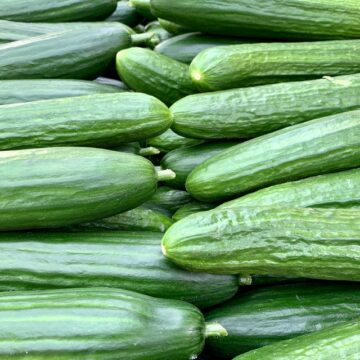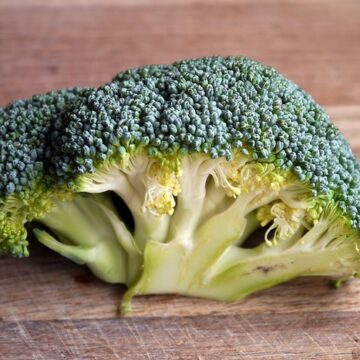As a dog lover, you’re probably always looking for ways to treat your furry friend to something special. Swede, also known as rutabaga, is a root vegetable that’s often used in human dishes. But can dogs eat Swede too? As a skilled assistant with a background in copywriting and digital marketing, I’ve had the opportunity to work closely with veterinarians and pet experts. Through my research and conversations with these professionals, I’ve learned that feeding your dog certain human foods can be risky. However, when it comes to swede, there are some benefits that you might not have known about. In this article, we’ll explore a veterinarian’s perspective on whether or not dogs can safely enjoy swede, and what you should consider before adding it to your furry friend’s diet. So, let’s dive in and discover the truth about this tasty root vegetable!
Can dogs eat Swede?
The short answer is yes, dogs can eat swede. In fact, swede is a nutritious vegetable that can offer several health benefits for dogs. This root vegetable is high in fiber, which can aid in digestion and promote bowel regularity. Swede is also a good source of vitamin C, which can boost the immune system and help protect against disease. Additionally, swede contains potassium, magnesium, and calcium, all of which are important minerals for maintaining healthy bones, muscles, and organs.
However, it’s important to note that swede should only be given to dogs in moderation. Too much swede can lead to digestive upset, including diarrhea and vomiting. Additionally, swede is high in carbohydrates, which can contribute to weight gain if given in excess. As with any new food, it’s important to introduce swede gradually and monitor your dog’s reaction to ensure that it’s well-tolerated.
Health benefits of Swede for dogs
As mentioned earlier, swede can offer several health benefits for dogs. One of the key benefits of swede is its high fiber content. Fiber is essential for maintaining healthy digestion and bowel regularity. In addition, fiber can help to regulate blood sugar levels and reduce the risk of certain diseases, such as diabetes and heart disease.
Swede is also a good source of vitamin C, which is an important antioxidant that can help to protect cells from damage caused by free radicals. Vitamin C can also boost the immune system and help to prevent infections and illnesses. Additionally, vitamin C is important for the production of collagen, which is a protein that’s essential for healthy skin, hair, and nails.
Another benefit of swede is its mineral content. Swede is a good source of potassium, magnesium, and calcium, all of which are important for maintaining healthy bones, muscles, and organs. Potassium is essential for regulating blood pressure and maintaining proper fluid balance in the body. Magnesium is important for muscle and nerve function, as well as maintaining a healthy heart rhythm. Calcium is important for building and maintaining strong bones and teeth, as well as nerve and muscle function.
Potential risks and side effects of feeding Swede to dogs
While swede can offer several health benefits for dogs, there are also some potential risks and side effects to be aware of. One risk is digestive upset, including diarrhea and vomiting. This can occur if your dog eats too much swede or if they’re sensitive to the fiber in the vegetable. Additionally, swede is high in carbohydrates, which can contribute to weight gain if given in excess.
Another risk to consider is the possibility of choking. Swede is a hard vegetable and can be difficult for some dogs to chew and swallow, especially if it’s given in large pieces. To reduce the risk of choking, it’s important to cut swede into small, bite-sized pieces and monitor your dog while they’re eating.
Finally, it’s important to note that some dogs may be allergic to swede. Signs of an allergic reaction can include itching, swelling, and difficulty breathing. If you notice any of these symptoms after feeding your dog swede, stop giving it to them immediately and contact your veterinarian.
How to safely incorporate Swede into your dog’s diet
If you’re interested in adding swede to your dog’s diet, there are a few things to keep in mind to ensure that it’s done safely. First, it’s important to introduce swede gradually and monitor your dog’s reaction. Start with a small amount of swede and gradually increase the amount over several days to allow your dog’s digestive system to adjust.
Second, it’s important to prepare swede properly. Cut it into small, bite-sized pieces and cook it until it’s soft and easy to chew. Avoid giving your dog raw swede, as it can be difficult to digest and can pose a choking hazard.
Finally, it’s important to give swede in moderation. While it can offer several health benefits, too much swede can lead to digestive upset and weight gain. As a general guideline, swede should make up no more than 10% of your dog’s total diet.
Alternatives to Swede for dogs
If you’re not sure if swede is right for your dog, there are plenty of other vegetables that can offer similar health benefits. Some good options include:
– Carrots: Carrots are high in fiber, vitamin A, and potassium, and can help to improve digestion and promote healthy skin and eyes.
– Sweet potatoes: Sweet potatoes are a good source of fiber, beta-carotene, and vitamin C, and can help to regulate blood sugar levels and boost the immune system.
– Green beans: Green beans are low in calories and high in fiber, and can help to promote healthy digestion and weight management.
– Broccoli: Broccoli is a good source of fiber, vitamin C, and calcium, and can help to support healthy bones and teeth.
How to prepare Swede for dogs
To prepare swede for your dog, start by washing it thoroughly and removing any dirt or debris. Cut the swede into small, bite-sized pieces, and cook it until it’s soft and easy to chew. You can boil, steam, or roast swede, depending on your dog’s preferences. Avoid adding any seasoning or spices, as these can be harmful to dogs.
Once the swede is cooked, allow it to cool before serving it to your dog. You can add it to their regular food as a healthy treat, or serve it as a standalone snack.
Frequently asked questions about feeding Swede to dogs
1. Can swede cause diarrhea in dogs?
– Yes, swede can cause diarrhea in dogs if given in excess or if they’re sensitive to the fiber in the vegetable.
2. Is swede safe for diabetic dogs?
– Yes, swede can be a good option for diabetic dogs, as it’s high in fiber and can help to regulate blood sugar levels.
3. Can dogs eat raw swede?
– It’s not recommended to give dogs raw swede, as it can be difficult to digest and can pose a choking hazard.
4. Can swede cause weight gain in dogs?
– Yes, swede is high in carbohydrates and can contribute to weight gain if given in excess.
5. Can dogs be allergic to swede?
– Yes, some dogs may be allergic to swede. Signs of an allergic reaction can include itching, swelling, and difficulty breathing.
Conclusion: Is Swede a safe and healthy food for dogs?
In conclusion, swede can be a safe and healthy food for dogs when given in moderation. This root vegetable is high in fiber, vitamin C, and important minerals, and can offer several health benefits for dogs. However, it’s important to introduce swede gradually and monitor your dog’s reaction, as too much can lead to digestive upset and weight gain. Additionally, it’s important to prepare swede properly and cut it into small, bite-sized pieces to reduce the risk of choking. If you’re not sure if swede is right for your dog, there are plenty of other vegetables that can offer similar health benefits. As always, consult with your veterinarian before making any major changes to your dog’s diet.
Further resources and recommendations for dog owners
– American Kennel Club: https://www.akc.org/
– The Humane Society of the United States: https://www.humanesociety.org/
– Association for Pet Obesity Prevention: https://petobesityprevention.org/
– Veterinary Nutrition Group: https://vetnutrition.tufts.edu/
– Your veterinarian








